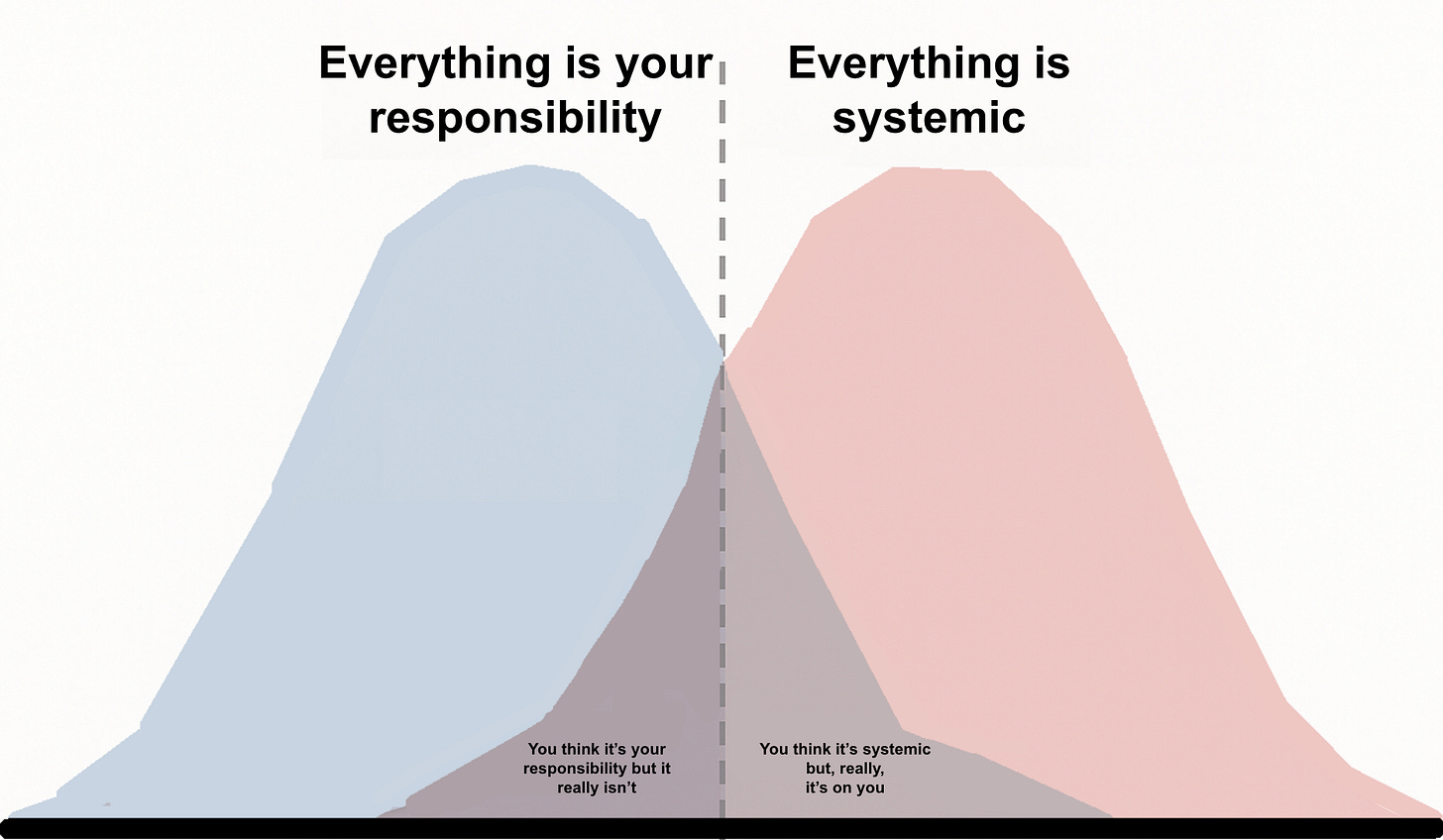Type 1 Type 2
Spend enough time in any discourse space online and you’re bound to eventually hear about System 1 and System 2—the terms for the distinction between the fast and intuitive mode of thinking and the slower, more deliberate one. Spend even more time in those same spaces and you’ll also get to hear from all the people who are mad at Daniel Kahneman for having chosen such nondescript names. Now, the time is finally ripe to popularise another nondescript naming convention for people to get mad at.
Type1/Type 2 errors refer to two classes of errors in statistics. Basically, the two kinds of mistakes you can make when testing a hypothesis: to mistakenly think an effect exists, or to mistakenly think that it doesn’t.
Type 1 refers to this first class of mistakes. The “false alarm”. When you think there is an effect, but there isn’t.
Type 2 refers to the second class. “Missed detection”. When you think there isn’t an effect, but there is.
The reason why I’m writing about this distinction is not just to make people mad online—that’s just an incentive. The reason is to spread Type 1/Type 2 errors as an epistemic tool. (And there’s the connection to Kahneman. Don’t tell me you had made the Type 2 missed detection error of thinking I’d ever invoke his name as mere literary device.)
“Ok, I agree: making people online mad is fun. But I don’t really see the value of this distinction as an epistemic tool”, you say? Ok, here’s the epistemic kicker: you cannot reduce both classes of error to zero.
Once again for the people in the back—the ones the kicker didn’t reach: you. cannot. reduce. both classes of error to zero.
What this means is that you’ll always err, that you cannot not err. Worried about missed detection and increasing the sensitivity of your measurements in response? Now you have to deal with more false positives. Annoyed at all the false positives, so you decreased it? Now you’ll miss some real instances. There’s no getting around it. Error is baked in.
Cool, eh? Oh, and, speaking of being mad online: this little epistemic nugget explains a lot of online discourse.
(Did… did you also Type 2 think the quip about being mad online was just a quip?)
Type 1, Type 2, and Being Mad online
Tautologically, whatever discourse is going on online is the discourse that people are engaging with. A very reliable way of getting people to engage is to trigger strong emotions, especially negative emotions. Like making them mad.
Now, one of the ways to make people Mad Online is to—and due apologies for exhuming a SJW term, I understand it’s passé—to deny their lived experience.
And, if you have two sets of people, each of which who, in their attempts to validate their own lived experience, intrinsically must deny the others’… now that’s a surefire way to generate discourse.
How does that connect to what we were just talking about? An example, to make it concrete:
Illustrated above is a classic engine of online discourse. On one side you have people arguing for full personal responsibility: your shoulders ache with the weight of the world. The Jordan Peterson style crowd. On the other you have people who argue for understanding the deep systemic incentives causing personal individual outcomes. More on the Social Justice side. (Three times, really?)
Now you can just guess that the people who are now saying “It’s all personal responsibility” were making the Type 1 error of wrongly judging things to be systemic that weren’t and that they started flourishing once they stopped making that particular mistake. Conversely you just know that all the people claiming everything is systemic had just the opposite experience: they treated as personal things that really weren’t and, in all likelihood, burned out big time.
The point here is this: tacking towards making the opposite mistake you’ve been making feels Very Insightful And Empowering no matter what your starting point was. But if you’re empowering insight was “I can take control” (correcting from Type 1), then hearing “it’s all systemic” threatens that hard-won agency which feels invalidating. If someone’s relief was “it wasn’t my fault” (correcting from Type 2), then hearing “take personal responsibility” re-triggers the self-blame.
No one enjoys feeling invalidated. No one enjoys feeling blamed either. So you can rest assured flame wars will follow. Boom: we have derived discourse.
No one is wrong and we should all be friends (but won’t)
To summarise: in any domain where people have been erring in a particular direction enacting a categorical stand in the opposite direction will in all likelihood be beneficial.
Hopefully, this now seems obvious. Now, I’m not particularly smart, so I cannot be the first person to think. I’m also very online. So how come neither of us had heard about this before?
The reason is this: it is the very categoricalness that makes the formulation useful for those who were erring the opposite way which makes it triggering for those who just corrected that error. And because it is triggering people get Mad Online which gets them to reply which boosts the visibility of the categorical claims they’re replying to. Boosts them, relative to all others.
In all likelihood the non-categorical… the nuanced take exists, and has already been written up before.
You just never see it because it makes no one mad.
HW: You might be, like the world’s richest man wondering why oh why though is it called Type 1 Type 2 errors when false positive false negative are such better names. This is your take-home exercise: you have in this article all the tools you need to answer that question.
